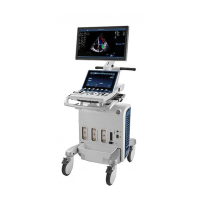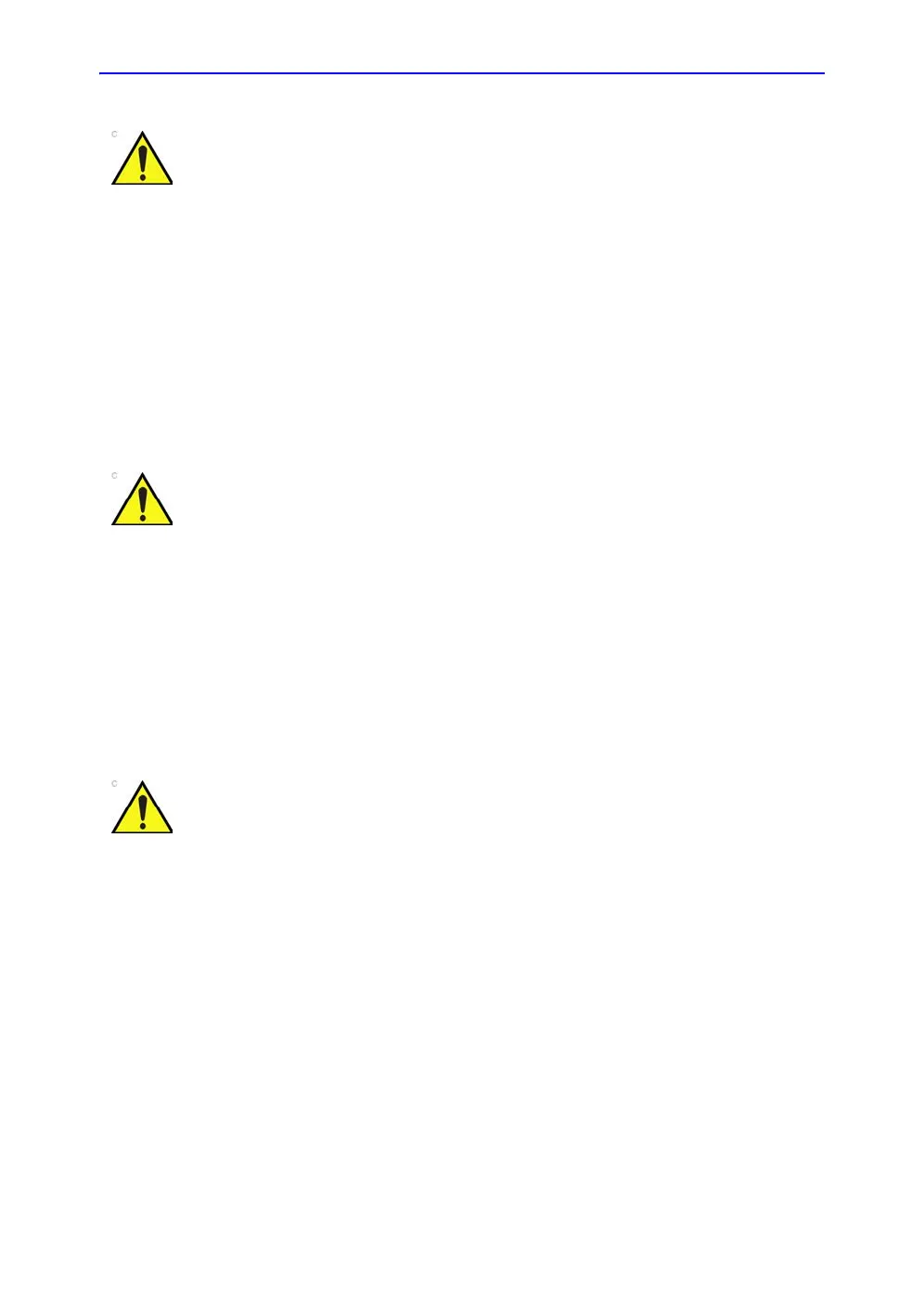4D and Multi-plane Modes
6-8 Vivid S70 / S60 – User Manual
BC092760-1EN
01
Real time multi beat 4D acquisition
Real time multi beat 4D acquisition is based on ECG gated
acquisition of at least two sub-volumes. This technique enables
the acquisition of a larger volume without compromising the
spatial and/or temporal resolution, by combining sub-volumes
acquired over several heart cycles. When all sub-volumes have
been recorded, the process is repeated replacing the oldest
sub-volumes.
To avoid spatial artifacts, make sure that the probe and the
patient are not moving during the acquisition. The patient
should, if possible hold his/her breath. The ECG trace should be
stable.
1. Connect the ECG device and make sure to obtain a stable
ECG trace.
2. Select a 4D probe, and an application.
3. Enter 4D either by pressing the 4D button on the Control
panel or by selecting a 4D acquisition preset on the Touch
panel: Medium (medium size sector with top-down view) or
Large (large sector more suited for acquisition of the
complete LV).
The lower the volume rate, the longer is the delay between
acquisition of the different parts of the image. So settings with
low volume rate may introduce geometrical distortions on fast
moving structures.
ECG gated acquisition may by nature contain artifacts.
Artifacts may be caused by:
• Movements of the probe caused by the operator during
acquisition.
• Movements of the patient during acquisition, including
movements caused by respiration.
• Irregular heart rate during acquisition.
To validate the acquisition, press Multi-Slice and perform a
visual inspection. Stitching artifacts are shown as visible
transitions between the sub-volumes (Figure 6-5).
The lower the volume rate, the longer is the delay between
acquisition of the different parts of the image. So settings with
low volume rate may introduce geometrical distortions on fast
moving structures.

